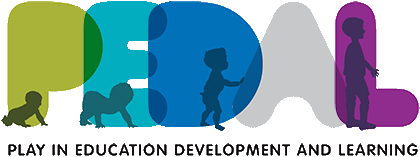Who children play with in their earliest years at school could be more important for their early communication than their fundamental social skills, new evidence shows.
In a newly-reported study of 148 primary school children, researchers found that the friends they play with affect how they communicate with others, much more than their individual social skills.
Video-recordings of the children playing together revealed that many of them mirrored their play partner’s style of communication. Individual children behaved more similarly to their own play partner than children in other pairs. Researchers also suggest that children may select friends to play with based on their use of similar communication styles.
The research looked for examples of ‘connectedness’ in 6-7-year-olds’ communication while playing together, examining how they cooperated, shared ideas and took turns to speak.
Echoing findings from a previous, similar study, academics found that over half (56.3%) of the ‘connected turns’ among participants could be explained by their partner’s style of play, where children varied their communication to match that of their current play partner.
Comparatively, and surprisingly, researchers found that children’s individual socio-cognitive skills – such as their ability to tune into others’ perspectives and understand others’ emotions – did not have a strong influence on how they communicated with their peers during play.
The bond formed between play partners, this new evidence highlights, is therefore unexpectedly important to how children develop through play during this formative period in their lives.
This research was carried out by members of the Centre for Research on Play, Education, Development and Learning (PEDAL) at the University of Cambridge, and academics from the University of Sussex as a two-stage Registered Report with the British Journal of Developmental Psychology.
Dr Emily J. Goodacre from the Centre for Research Play, Education, Development and Learning (PEDAL) at the University of Cambridge said:
“Social play involves a number of complex factors, so it’s not surprising that some pairs were more connected and cooperative than others. But the reasons why were surprising. We realised that it was not the usually studied factors such as a child’s existing socio-cognitive skills which most affected how they communicated with their partner, but instead who that play partner was.”
“Our study shows that at this age, individual differences in children’s socio-cognitive skills may not be directly related to their engagement in connected talk in a play settings. We hope this study will help understanding of the importance of social play for school-aged children, and that further research will explore the connections that children make with each other through play.”
This study used secondary data from the Children’s Relationships with Peers through Play (ChiRPP) study, a three-wave longitudinal study of children’s play and social relationships during the first three years of school in the UK. In the study, researchers observed a sub-sample of 148 children aged 6-7-years-old as they engaged in a recorded free play session with a partner, using a Playmobil treehouse toy set. Children were assigned a play partner based on their responses to Sanderson and Siegal’s interview of friendships, a way to assess children’s friendships from their own perspectives. This asked children to name their “very best friend” and two additional best friends that they would like to play with. Most children were observed in pairs where their friendship was reciprocated (i.e. both children nominated the other as one of their ‘best friends’), with some children also observed in pairs where their friendship was not reciprocated and/or neither child had nominated the other.
While researchers could not draw a concrete link between children’s levels of ‘connectedness’ and their friendship status, the data collected did show that who children were playing with was strongly associated with how they communicated in a peer play context, suggesting this as a rich area for future study. In addition, the study highlights how play and communication in the early school years are shaped by social factors, including children’s relationships with one another, rather than their own individual characteristics.
The authors of the report suggest that future studies not only build upon existing knowledge that peer social play provides a particularly important context for communicative development, but to use partner-based research methods to consider the social influences which impact how children communicate through play during their crucial first years at school.
Dr Emily J. Goodacre added:
“Our study provides evidence that the characteristics of play at this age are not based on fixed individual differences, and that more attention should instead be paid to the value of partner-based methods and analysis to understand the impact of peer relationships on children’s play.”
Building connections through play: Influences on children’s connected talk with peers is published in the British Journal of Developmental Psychology. This research was carried out by members of the Faculty of Education at the University of Cambridge, in collaboration with the University of Sussex, and funded by the LEGO Foundation and the Cambridge Trust.

Research paper
Read the full open-access research paper here, published by the British Journal of Developmental Psychology.

Play Piece
Find out more about ‘connectedness’ and children’s communicative development in Emily’s blog post.
